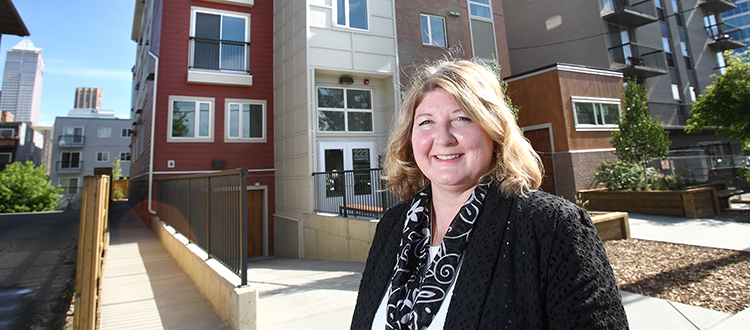
June 23, 2016 | Alex Frazer Harrison
Over-under
Housing officials cite increasing rates of overcrowding in Calgary's housing marketHousing experts say a soft labour pool brought upon by weak economic conditions is partly to blame for increasing rates of overcrowding, or "underhousing" in Calgary homes.
RESOLVE executive director Sheryl Barlage – whose organization is made up of nine partner agencies aimed at building affordable and supported rental homes for 3,000 homeless and vulnerable Calgarians by March 31, 2018 – says about 3,500 Calgarians were considered homeless in a recent Homeless Foundation survey, with about 14,000 at risk of homelessness – and that doesn't include people "couch-surfing."
With the economic downturn, "we know fundamentally that number is up. It's hard to get a handle; people are one paycheque away (from homelessness) or aren't in appropriate housing. And the current economic climate (as well as) social issues are impacting the need. But the need has always been urgent."
The $120-million RESOLVE campaign has seen a building for the Homeless Foundation already opened and others in the position of seeing shovels going into the ground.
"We had support from an anonymous donor through the Calgary Foundation to pay down the debt on two buildings," said Barlage. "We've (also) been able to pay off the debt for a family-focused building with the Calgary Homeless Foundation."
"Affordable housing is intended to be appropriate housing – appropriate to needs of families."
The Calgary Housing Company, owned by the City of Calgary and which manages about 7,200 subsidized and affordable properties, has seen a slight decrease in the average monthly applications for housing, with 241 in May 2016, more than 259 in May 2015.
Yet the waiting list for "social and affordable housing" in May stood at just under 4,000 applicants, about 500 more than last year, said company spokesman Darren Nimegeers, adding the waiting list is a floating number due to applicants regularly being taken off the list after a 12-month expiry.
Nimegeers said there are strict provincial regulations in place to prevent "underhousing" in social housing.
Under the Social Housing Accommodation Regulation, such housing is considered overcrowded if more than two people must share a bedroom, with at least one individual in each of the other bedrooms, and if an individual over 18 "must share a bedroom with another member of the household," or someone over the age of five has to share a bedroom with "an individual of the opposite sex." (Spouses or partners sharing a bedroom don't count.)
"If you use the language of 'overcrowding' that you see of 12 people in a one-bedroom apartment – the bar is set quite a bit lower than that," said Nimegeers.
"Affordable housing is intended to be appropriate housing – appropriate to needs of families. If children age in place or additional children are welcomed into a family, they can transfer within our system ... subject to availability."
Barlage said having different housing options and collaborative solutions to affordability is one way to reduce the potential for overcrowding.
There are many reasons why overcrowding, or underhousing, can be damaging, said Lai Sing Louie, regional economist for the Prairies and territories with Canada Mortgage and Housing Corp. (CMHC).
"There are social implications to overcrowding and there could be other issues," he said. "If you're cooking and boiling water in a high-density environment without proper ventilation, you could create mould and the dwelling could start to degrade. And there's mental health – think of yourself in rush-hour traffic.
"And it can be difficult to get a good night's sleep with too many people in the house and people on different time clocks."
That's why, Louie said, it's important to track overcrowding – though he says Calgary market conditions right now favour the buyer and renter.
"There's a substantial amount of choice out there in terms of vacancy rates," he says. "Our fall survey in October said (apartment) vacancies were at about 5.3 per cent. It may be closer to seven per cent by (next) October."
Tagged: Calgary Homeless Foundation | Calgary Homelessness | Calgary Housing Company | Calgary Real Estate | Calgary Real Estate News | Canada Mortgage and Housing Corporation | City of Calgary | CMHC | housing | Lai Sing Louie | RESOLVE | Uncategorized | YYCRE




